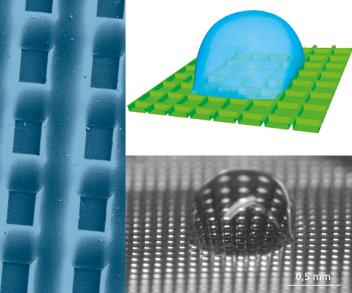Dr. Adham Hashibon and colleagues, Fraunhofer Institute for Mechanics of Materials IWM, Freiburg, Germany, have developed software that simulates the form various liquid droplets take on different surfaces, indicating whether the liquid distributes itself over the surface, or contracts to form droplets in order to minimize contact with the surface. The program also calculates the flow behavior in terms of how liquids move across different surfaces. The determinant factors at different scales of measurement are integrated, from atomic interactions to the impact of microscopic surface structure.
The simulation is also useful in medical examinations. It will be used to help optimize microfluidic systems and to design surfaces so that as little liquid as possible gets left behind.
And the technique can be used to heighten the concentration of certain molecules: When a channel splits into two, giving each fork a different surface structure, makes it possible to separate the various components of the liquid, sending, for example, DNA molecules one way while other components are led along the alternative route.
Image: © Fraunhofer IWM
- Fraunhofer-Gesellschaft zur Förderung der angewandten Forschung e.V., Munich, Germany



